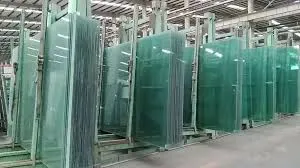The Art and Functionality of Architectural Glass Patterns
Architectural glass patterns play a pivotal role in contemporary design, merging aesthetics with functionality in versatile ways. As architects and designers continuously seek innovative materials that offer both beauty and performance, patterned glass has gained immense popularity. This article explores the significance of architectural glass patterns, their diverse applications, and their impact on modern architecture.
Understanding Architectural Glass Patterns
Architectural glass patterns refer to the various textures, designs, and finishes applied to glass surfaces. These patterns can enhance visual appeal, amplify light transmission, and provide privacy without sacrificing openness. Ranging from subtle frosted finishes to intricate etched designs, patterned glass can transform ordinary spaces into extraordinary environments.
The importance of light in architecture cannot be overstated, and glass is inherently an excellent medium for manipulating it. Patterns can diffuse, reflect, or refract light, bringing dynamism to both interiors and exteriors. By carefully choosing the pattern, architects can control how light interacts with the space, creating moods and atmospheres that cater to different functionalities—from calming solitude in a healthcare facility to vibrant energy in commercial spaces.
Applications of Architectural Glass Patterns
1. Commercial Spaces In office buildings and retail environments, patterned glass is often employed to create striking facades, exhibiting brand identity while allowing natural light to flood the interior. Textured glass walls can act as a visual barrier, ensuring privacy for conference rooms while still maintaining a connection to the outside world.
2. Residential Design In homes, architectural glass patterns serve functional purposes such as privacy between rooms or from the outside. Frosted or etched glass used in bathroom enclosures and partitions allows natural light while ensuring a sense of seclusion. Furthermore, decorative glass panels can serve as beautiful non-structural elements within a home, adding character and style.
architectural glass patterns
3. Public Buildings Libraries, museums, and community centers increasingly use patterned glass to enhance their architectural language. These public spaces often aspire to inspire and engage visitors, and patterned glass can help to create unique visual narratives. For instance, a library might incorporate book-themed motifs in the glass, enhancing the storytelling aspect of the space.
4. Skylights and Ceilings Utilizing glass patterns in skylights adds an artistic element to a building’s top while ensuring optimal natural light infiltration. Patterns can diffuse sunlight, preventing glare and reducing heat buildup, hence enhancing energy efficiency.
The Impact on Modern Architecture
The introduction of advanced technology in glass manufacturing has significantly expanded the possibilities of glass patterns. Digital printing, interlayers, and a range of coating techniques enable architects to customize designs to an unprecedented level. This technology has encouraged architects to experiment with complex patterns that can tell stories or enhance thematic elements of the design.
Moreover, sustainability has become a vital consideration in modern architecture. Many glass manufacturers are now offering eco-friendly options that not only minimize environmental impact but also contribute to energy-efficient building designs. By integrating architectural glass patterns with sustainable practices—such as using recycled materials or designing for optimal solar gain—architects can create spaces that are both beautiful and responsible.
Conclusion
The integration of architectural glass patterns into modern design is a testament to the creativity and innovation present in today’s architecture. They serve not just as decorative elements but as essential tools for manipulation of space, light, and mood. As technology and environmental awareness continue to evolve, the future of architectural glass patterns promises to deepen their role in shaping our built environment. Whether in commercial, residential, or public projects, patterned glass does much more than simply glaze over a facade—it reflects the vision of its creator while enriching the experience of those who inhabit the space.
 Afrikaans
Afrikaans  Albanian
Albanian  Amharic
Amharic  Arabic
Arabic  Armenian
Armenian  Azerbaijani
Azerbaijani  Basque
Basque  Belarusian
Belarusian  Bengali
Bengali  Bosnian
Bosnian  Bulgarian
Bulgarian  Catalan
Catalan  Cebuano
Cebuano  Corsican
Corsican  Croatian
Croatian  Czech
Czech  Danish
Danish  Dutch
Dutch  English
English  Esperanto
Esperanto  Estonian
Estonian  Finnish
Finnish  French
French  Frisian
Frisian  Galician
Galician  Georgian
Georgian  German
German  Greek
Greek  Gujarati
Gujarati  Haitian Creole
Haitian Creole  hausa
hausa  hawaiian
hawaiian  Hebrew
Hebrew  Hindi
Hindi  Miao
Miao  Hungarian
Hungarian  Icelandic
Icelandic  igbo
igbo  Indonesian
Indonesian  irish
irish  Italian
Italian  Japanese
Japanese  Javanese
Javanese  Kannada
Kannada  kazakh
kazakh  Khmer
Khmer  Rwandese
Rwandese  Korean
Korean  Kurdish
Kurdish  Kyrgyz
Kyrgyz  Lao
Lao  Latin
Latin  Latvian
Latvian  Lithuanian
Lithuanian  Luxembourgish
Luxembourgish  Macedonian
Macedonian  Malgashi
Malgashi  Malay
Malay  Malayalam
Malayalam  Maltese
Maltese  Maori
Maori  Marathi
Marathi  Mongolian
Mongolian  Myanmar
Myanmar  Nepali
Nepali  Norwegian
Norwegian  Norwegian
Norwegian  Occitan
Occitan  Pashto
Pashto  Persian
Persian  Polish
Polish  Portuguese
Portuguese  Punjabi
Punjabi  Romanian
Romanian  Russian
Russian  Samoan
Samoan  Scottish Gaelic
Scottish Gaelic  Serbian
Serbian  Sesotho
Sesotho  Shona
Shona  Sindhi
Sindhi  Sinhala
Sinhala  Slovak
Slovak  Slovenian
Slovenian  Somali
Somali  Spanish
Spanish  Sundanese
Sundanese  Swahili
Swahili  Swedish
Swedish  Tagalog
Tagalog  Tajik
Tajik  Tamil
Tamil  Tatar
Tatar  Telugu
Telugu  Thai
Thai  Turkish
Turkish  Turkmen
Turkmen  Ukrainian
Ukrainian  Urdu
Urdu  Uighur
Uighur  Uzbek
Uzbek  Vietnamese
Vietnamese  Welsh
Welsh  Bantu
Bantu  Yiddish
Yiddish  Yoruba
Yoruba  Zulu
Zulu 

